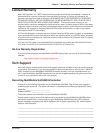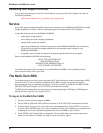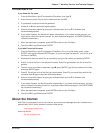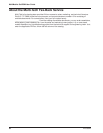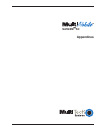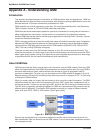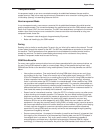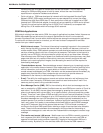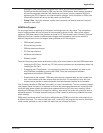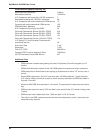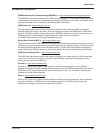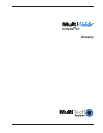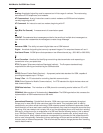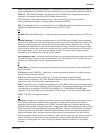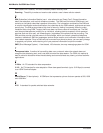
Appendices
MTSGSM
63
encrypted. GSM uses special encryption keys, which are synchronized between the
Subscriber Identification Module (SIM) card and the GSM network. Most network operators
will provide corporate customers with dedicated connection into the corporate LAN, thus
bypassing the POTS network, and interconnection charges. If this connection is ISDN, then
the benefits of quick call set-up and tear-down can be utilized.
• Group 3 Fax. Using fax software, mobile users can send and receive faxes as if they are
actually in their office.
GSM Data Support
For any organization, supporting its information technology users is a key issue. This is especially
true for mobile workers who do not have full-time access to hands on help. Many of the support
issues for GSM data users will be the same as those for PC Card modem users. However, because
GSM data involves a number of different technologies working together, there are a number of
different companies to turn to for support when problems occur. Including the:
• GSM network operator
• Airtime service provider
• GSM handset manufacturer
• PC Card manufacturer
• Notebook manufacturer
• Software vendor
There are three key areas where problems are likely to be encountered for first time GSM data users:
• Installing the PC Card. As with any PC Card product, problems can be experience when first
installing the PC Card.
• Supporting the PC application. It is important to ensure that the software you wish to use
with GSM data is capable of working with GSM. Today the most popular software
applications will work with GSM data.
• Enable data for the handset. GSM data users require a separate data and fax number from
their voice number to let them receive data and fax calls. It is important to verify with your
airtime service provider or network operator that data has been enabled for the handset.
One of the key benefits of GSM data is the ability to ‘roam’ internationally. This can, however, present
new support issues for users. It is important to ensure that roaming agreements are in place for both
voice and data (some network providers have agreements that are for voice-only roaming). When
selecting a GSM data solution to be used for roaming, ensure that the vendor can provide a level of
worldwide support. This helps reduce the amount of time it takes to resolve any problems that occur
when roaming.
GSM uses a technique called Time Division Multiple Access (TDMA) to divide the radio channel into
8 different time slots, 7 for voice or data calls, and 1 channel for call progress and control information.
Under normal operation a voice or data call would use one of these time slots.



